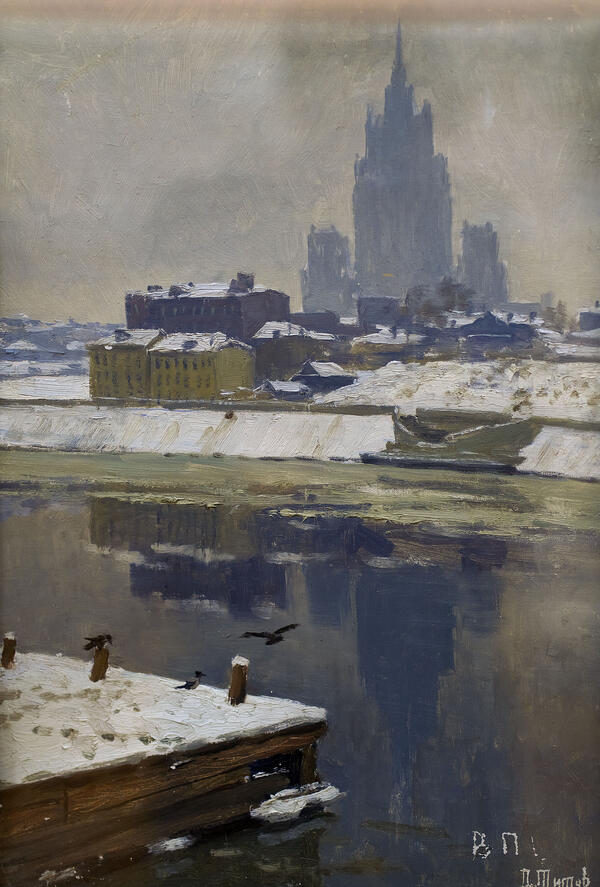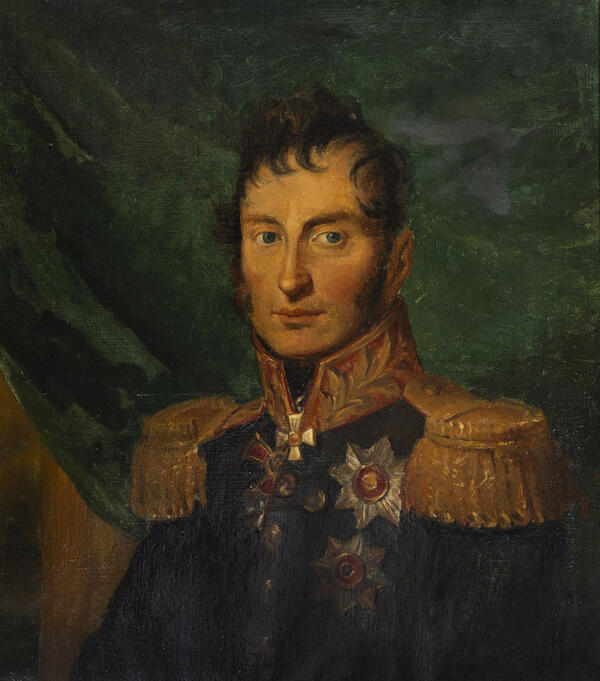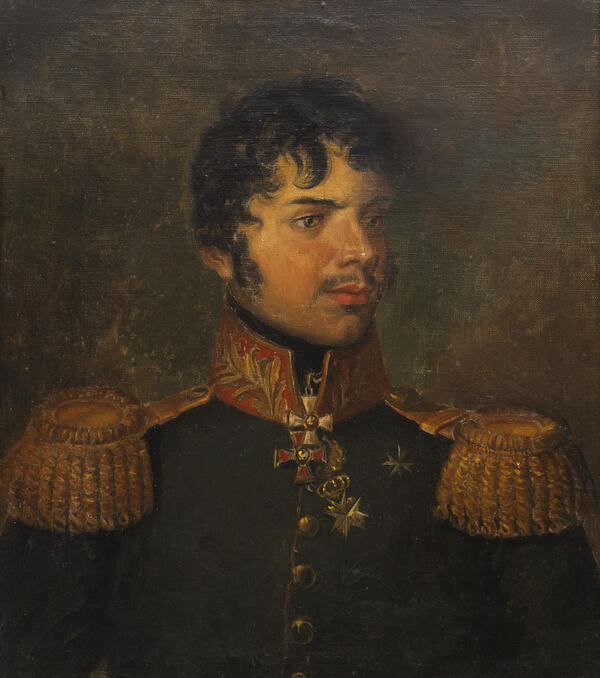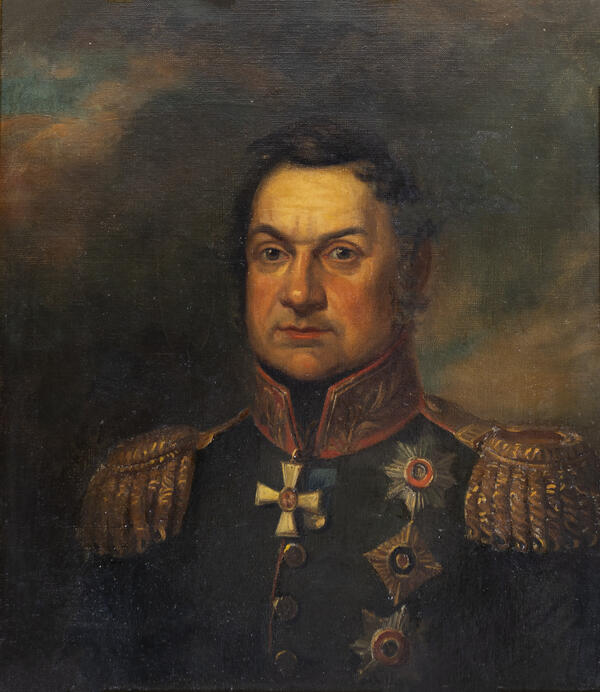The ‘Winter in Moscow’ canvas from the collection of the Valuy Museum of History and Art was created by Dmitri Titov, the Soviet landscape painter, graphic artist, Honored Artist of the RSFSR.
The artist was born in 1915 in Petrograd. He received his primary art education at the Leningrad Art School where he studied with Professor Victor Oreshnikov. Right after graduating from school in 1939, Titov went to the front.
In 1943, Dmitri Titov was discharged due to injury. He settled down in Moscow and soon started communicating with the artists in the capital. His landscapes were highly appraised by famous artists Sergey Gerasimov, Pavel Sokolov-Skalya, and Fyodor Fyodorovsky. In 1951, Titov’s “Spring rings” drew a wide response at the All-Union Art Exhibition. In addition, he participated in the All-Union Art Exhibitions of 1954 and 1957. Among the artist’s forest landscapes, his ‘Thousand-year Oak Tree’ canvas is the most well-known, which reveals the legacy of landscape painter Ivan Shishkin in a new manner. Dmitri Titov’s works are in the collections of the Moscow History Museum, the Museum of Contemporary History of Russia (Moscow), and other collections.
Dmitri Titov’s works were based on the best traditions of Russian national painting. He combined a lyrical landscape origin with an epic perception of nature in his paintings. In his ‘Winter in Moscow’ canvas, he depicted a fragment of the Moskva river pier which looks out onto the main building of Moscow State University on Sparrow Hills.
Titov used a cold coloring of dimmed colors in the painting, In the very center of the canvas, you can see the waters of the Moskva river mirroring the blue and purple silhouettes of urban buildings. Crows fly around the empty mooring posts on the pier. The artist managed to convey the state of nature of a cold winter day.
‘Winter in Moscow’ was donated to the Valuy Museum of History and Art from the Foundation of the All-Union Art Association named after V.E.Vuchetich of the Ministry of Culture of the USSR (currently, the Russian Union of Artists Foundation) in the 1980s. In total, the Foundation donated the Museum with about 80 works of art and more than 30 works from the sculpture collection.
The artist was born in 1915 in Petrograd. He received his primary art education at the Leningrad Art School where he studied with Professor Victor Oreshnikov. Right after graduating from school in 1939, Titov went to the front.
In 1943, Dmitri Titov was discharged due to injury. He settled down in Moscow and soon started communicating with the artists in the capital. His landscapes were highly appraised by famous artists Sergey Gerasimov, Pavel Sokolov-Skalya, and Fyodor Fyodorovsky. In 1951, Titov’s “Spring rings” drew a wide response at the All-Union Art Exhibition. In addition, he participated in the All-Union Art Exhibitions of 1954 and 1957. Among the artist’s forest landscapes, his ‘Thousand-year Oak Tree’ canvas is the most well-known, which reveals the legacy of landscape painter Ivan Shishkin in a new manner. Dmitri Titov’s works are in the collections of the Moscow History Museum, the Museum of Contemporary History of Russia (Moscow), and other collections.
Dmitri Titov’s works were based on the best traditions of Russian national painting. He combined a lyrical landscape origin with an epic perception of nature in his paintings. In his ‘Winter in Moscow’ canvas, he depicted a fragment of the Moskva river pier which looks out onto the main building of Moscow State University on Sparrow Hills.
Titov used a cold coloring of dimmed colors in the painting, In the very center of the canvas, you can see the waters of the Moskva river mirroring the blue and purple silhouettes of urban buildings. Crows fly around the empty mooring posts on the pier. The artist managed to convey the state of nature of a cold winter day.
‘Winter in Moscow’ was donated to the Valuy Museum of History and Art from the Foundation of the All-Union Art Association named after V.E.Vuchetich of the Ministry of Culture of the USSR (currently, the Russian Union of Artists Foundation) in the 1980s. In total, the Foundation donated the Museum with about 80 works of art and more than 30 works from the sculpture collection.






